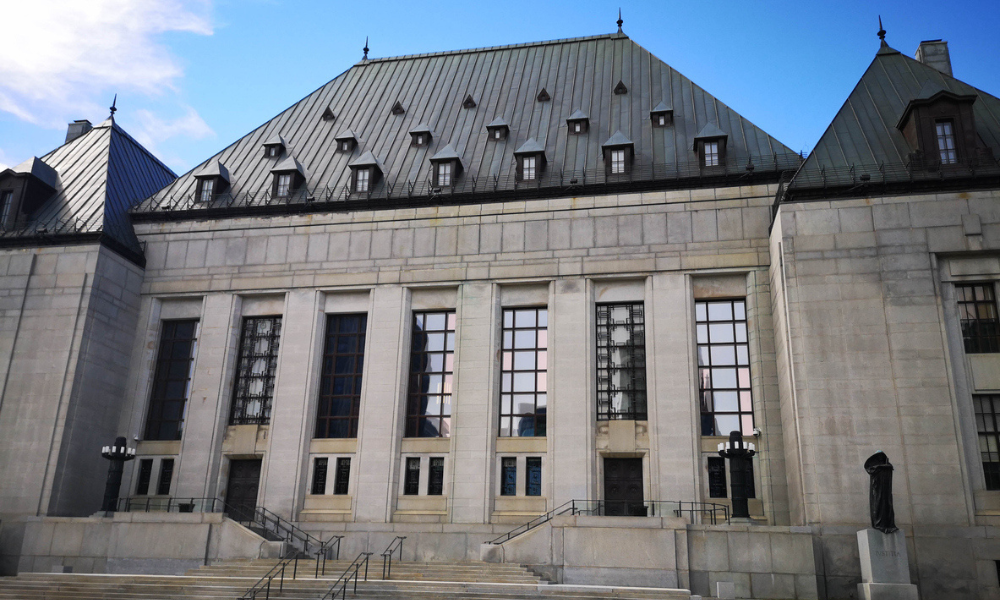Plaintiff claimed she tripped due to a "bunched-up rug"

The BC Supreme Court has refused to sever issues of liability and damages in a slip-and-fall accident case.
In Tahouney v. JCB Holdings Ltd., 2023 BCSC 1801, Linda Diane Tahouney tripped on a mat placed on the produce section floor in the Village Food Markets, a grocery store in Sooke, BC. She is 68 years old, retired, and resides in Sooke.
Logan Food Group Ltd. owned and operated the store. It leased the space from JCB Holdings Ltd. Tahouney sued the owners and operators of the store, alleging that they were negligent. She alleged that while at the store, she “ tripped and fell due to a bunched-up rug.” She asserted that the state of the rug presented a foreseeable hazard, the presence of which is attributable to the negligence of the defendants or breach of their duties as occupiers under the Occupiers’ Liability Act.
The owners and operators of the store applied to have the issue of liability severed from the issue of damages and for judgment in their favour, dismissing the claim against them by way of summary trial. The defendants denied that the accident occurred as alleged or that they were negligent or breached any duty. They contended that it was attributable either to Tahouney’s negligence or no negligence at all.
The court explained that the test the applicants must meet on an application for an order to sever liability from damages and to have the issue of liability determined separately through a summary trial is two-fold. First, the court must decide if there should be severance of the issues, and second, to determine whether a summary trial is appropriate.
Furthermore, the court noted from case law that the test for the appropriateness of severance requires determining the existence of extraordinary, exceptional, or compelling reasons for the severance.
The applicants argued that the case was suited to severance and summary trial. They said Tahouney had not adduced any evidence to substantiate her claim that a breach of duty by the store owners and operators caused the accident. Instead, they argued that her claim was based on nothing but speculation. Moreover, they contended that even if Tahouney could succeed in demonstrating that the accident was attributable to a pre-existing hazard, they insisted that they had met their burden to show that they had in place a reasonable system to prevent any such risk from arising.
On the other hand, Tahouney argued that this was not a case in which liability could or should be determined separately or summarily, particularly with a trial pending within the next few months. She claimed that the authorities cited by the applicants were distinguishable because she did not rely on speculation. Instead, she relied on a specific hazard, the existence of which is a triable issue that cannot be resolved summarily.
Furthermore, Tahouney argued that the applicants’ basis for their defence that they had a reasonable system is also challenged, mainly because it rests largely on hearsay. Consequently, it can only correctly be assessed at trial.
The BC Supreme Court agreed with Tahouney that the requisite findings of fact to support a determination of liability cannot be made based on the record before the court. In particular, the court said Tahouney’s claim rests on her description of what she felt as she fell. The applicants urged the court to find that the alleged pre-existing fold in the mat was merely an inference that she had drawn subsequently, based on her observation that the rug was “all bunched up” after the fall. The applicants contended that it was more likely that the fold was the effect, instead of the cause, of the fall.
However, the court underscored that it was not in a position to reach such a conclusion because Tahouney had not been cross-examined on her affidavit. As a result, the applicants’ theory had not yet been put squarely to her.
Ultimately, the court concluded that it could not make the findings of fact needed to grant judgment as requested by the applicants. Accordingly, the court ordered the case to proceed to trial.










